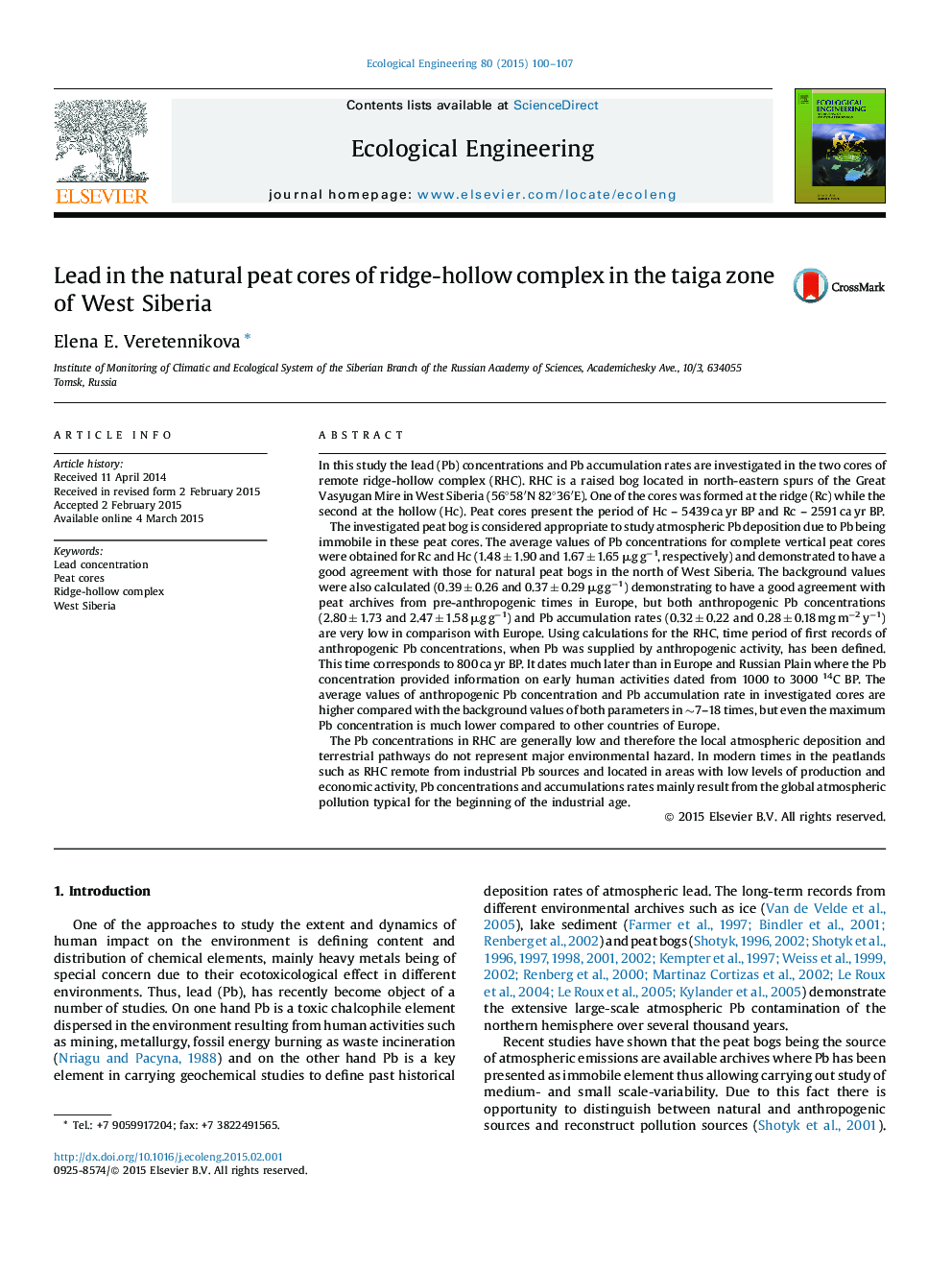| Article ID | Journal | Published Year | Pages | File Type |
|---|---|---|---|---|
| 4389035 | Ecological Engineering | 2015 | 8 Pages |
•The ridge-hollow complex is considered appropriate to study lead content.•Data on concentrations of natural and anthropogenic Pb for cores of RHC have been obtained.•Background Pb concentrations have a good agreement with those of European peat archives.•Anthropogenic Pb concentrations demonstrated higher values than those of background ones in ∼7–18 times.•Anthropogenic period when Pb was supplied by anthropogenic activity corresponds to 800 ca yr BP.
In this study the lead (Pb) concentrations and Pb accumulation rates are investigated in the two cores of remote ridge-hollow complex (RHC). RHC is a raised bog located in north-eastern spurs of the Great Vasyugan Mire in West Siberia (56°58′N 82°36′E). One of the cores was formed at the ridge (Rc) while the second at the hollow (Hc). Peat cores present the period of Hc – 5439 ca yr BP and Rc – 2591 ca yr BP.The investigated peat bog is considered appropriate to study atmospheric Pb deposition due to Pb being immobile in these peat cores. The average values of Pb concentrations for complete vertical peat cores were obtained for Rc and Hc (1.48 ± 1.90 and 1.67 ± 1.65 μg g−1, respectively) and demonstrated to have a good agreement with those for natural peat bogs in the north of West Siberia. The background values were also calculated (0.39 ± 0.26 and 0.37 ± 0.29 μg g−1) demonstrating to have a good agreement with peat archives from pre-anthropogenic times in Europe, but both anthropogenic Pb concentrations (2.80 ± 1.73 and 2.47 ± 1.58 μg g−1) and Pb accumulation rates (0.32 ± 0.22 and 0.28 ± 0.18 mg m−2 y−1) are very low in comparison with Europe. Using calculations for the RHC, time period of first records of anthropogenic Pb concentrations, when Pb was supplied by anthropogenic activity, has been defined. This time corresponds to 800 ca yr BP. It dates much later than in Europe and Russian Plain where the Pb concentration provided information on early human activities dated from 1000 to 3000 14C BP. The average values of anthropogenic Pb concentration and Pb accumulation rate in investigated cores are higher compared with the background values of both parameters in ∼7–18 times, but even the maximum Pb concentration is much lower compared to other countries of Europe.The Pb concentrations in RHC are generally low and therefore the local atmospheric deposition and terrestrial pathways do not represent major environmental hazard. In modern times in the peatlands such as RHC remote from industrial Pb sources and located in areas with low levels of production and economic activity, Pb concentrations and accumulations rates mainly result from the global atmospheric pollution typical for the beginning of the industrial age.
